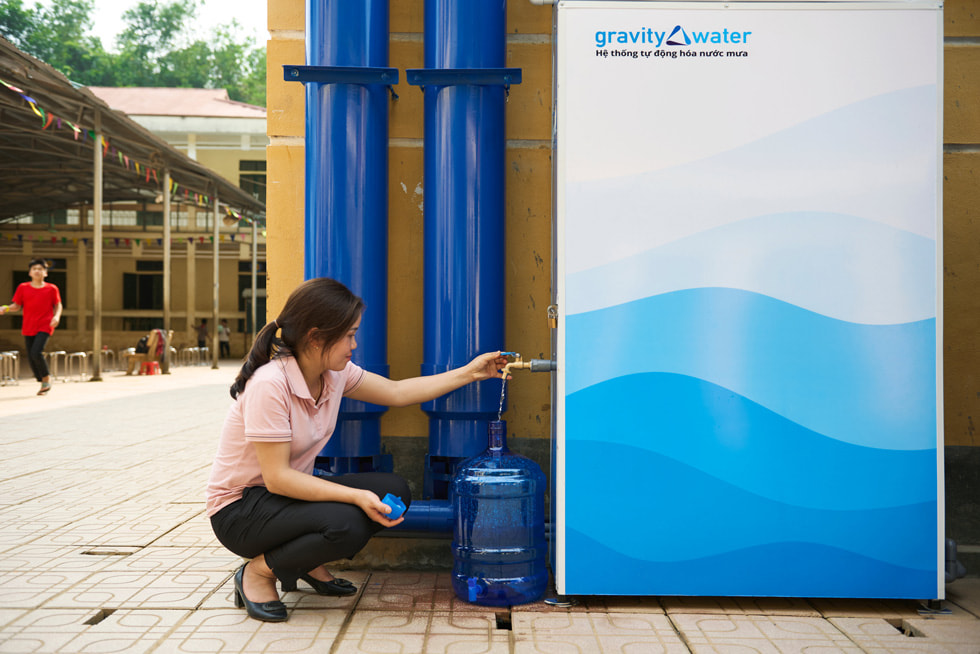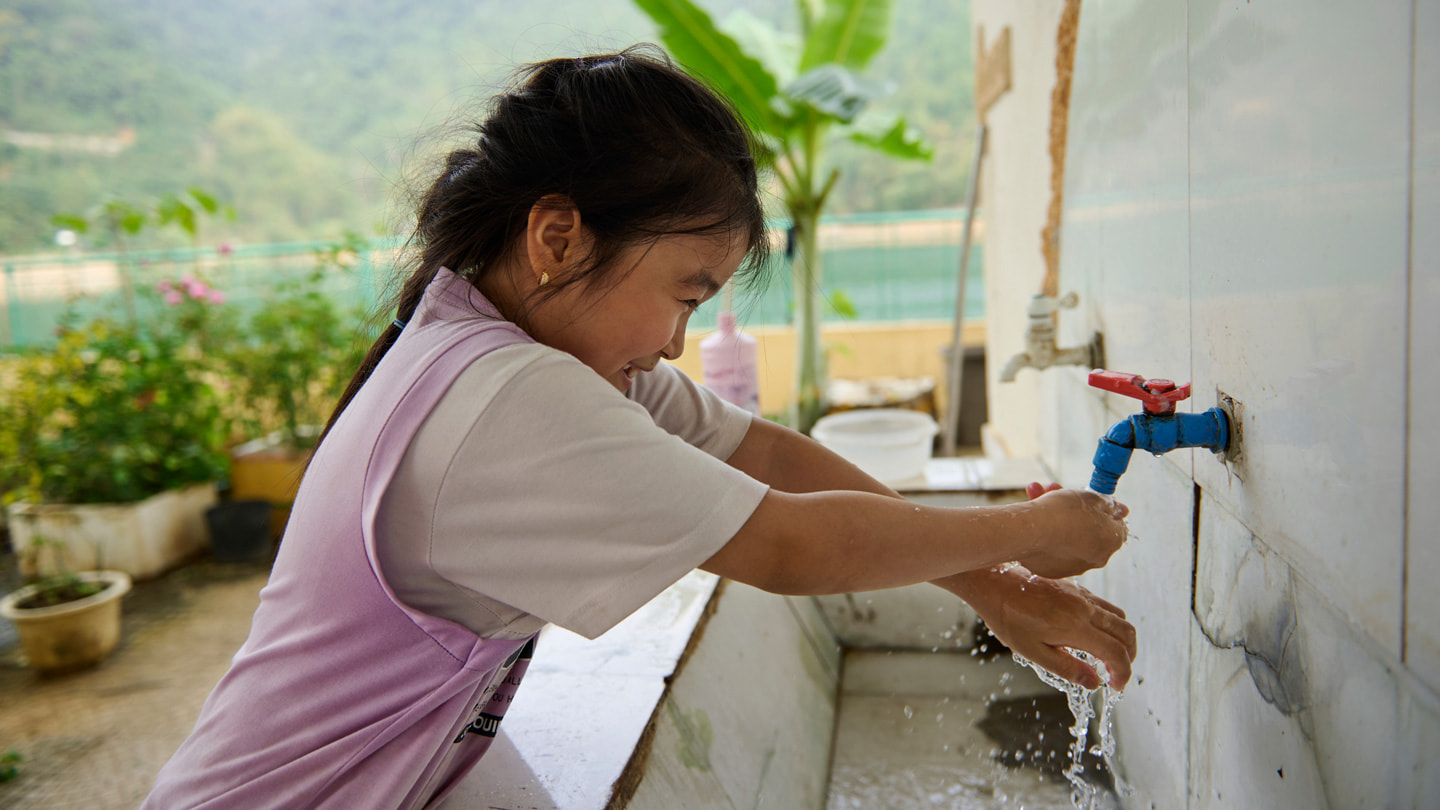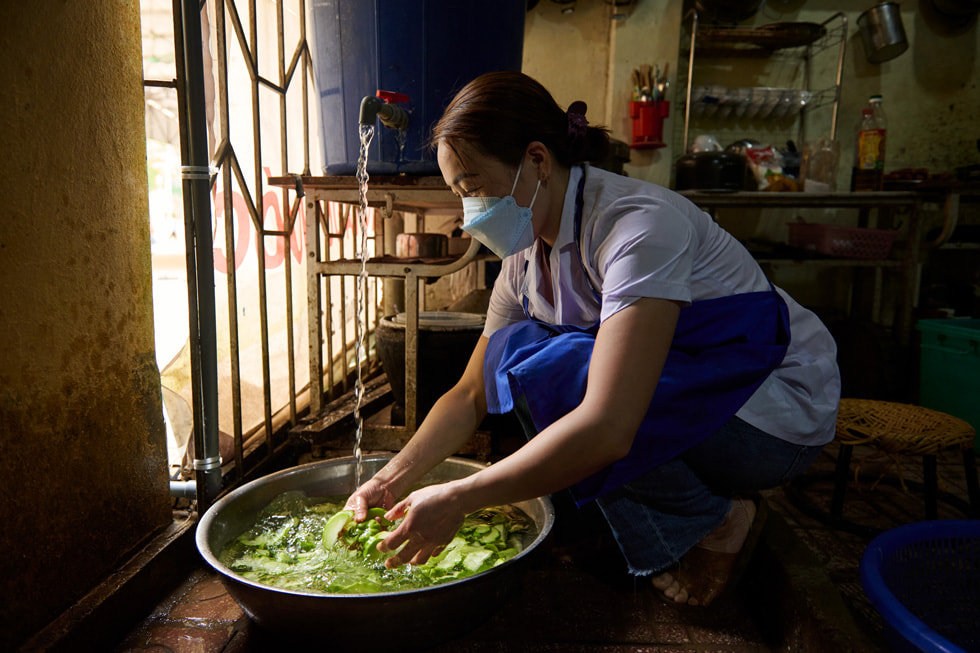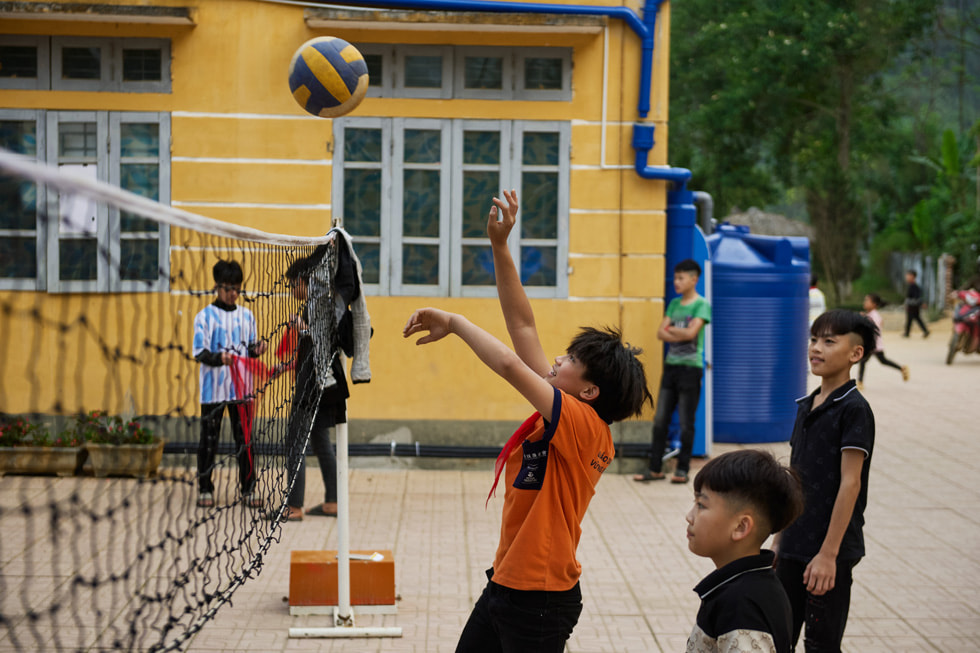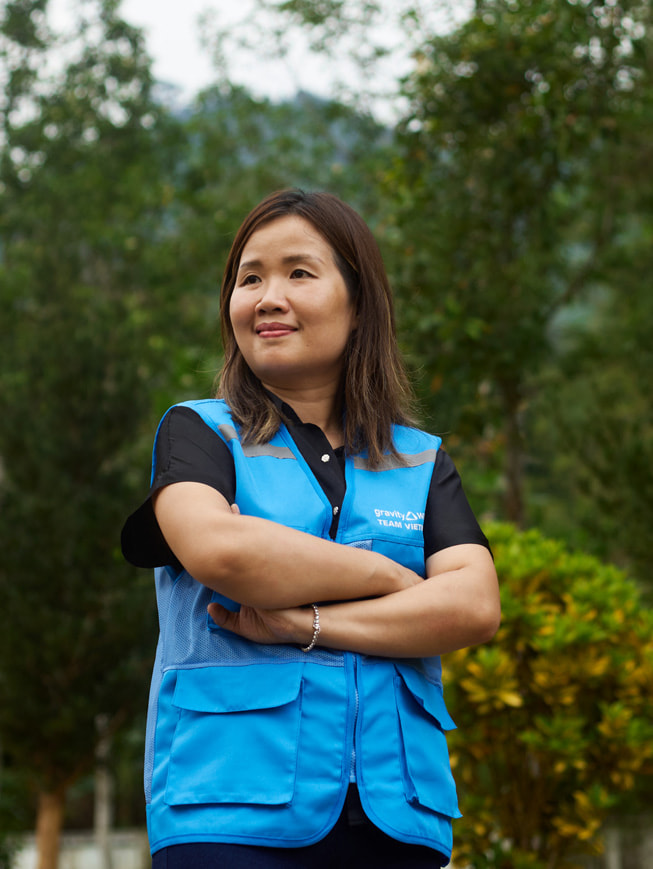apple stories
Apple grantee Gravity Water prepares the next generation of water stewards in Vietnam
With its innovative, climate-resilient rainwater harvesting and filtration technology, Gravity Water is providing over 38,000 students in Hòa Bình province with a clean water source
Snaking around Đà Bắc district in northern Vietnam’s rural Hòa Bình province, Hòa Bình Lake is still and tranquil. Families of farmers are sprinkled along its banks, coexisting with this expansive body of water. Their livelihoods depend on the resources it provides, including shrimp and freshwater fish, and when the natural streams coming off the mountains above are not enough — especially in the dry season — the lake’s water itself.
But in a place so beautiful with water seemingly so abundant, many locals have come to realize that the water is not safe. In some Dao families, an ethnic minority group that migrated to Vietnam as early as the 12th century, a belief is passed down from one generation to the next that a water deity — or a rain god — is only good to the people if they are good to the water.
“If we dirty the water, our water god will hit us in a negative way,” says Trần Thị Lan Hương, an administrator at the local Vay Nua Primary and Secondary Boarding School for Ethnic Minorities, where her son Màn Xuân Phûc attends second grade. “So we try to keep the water sources clean.”
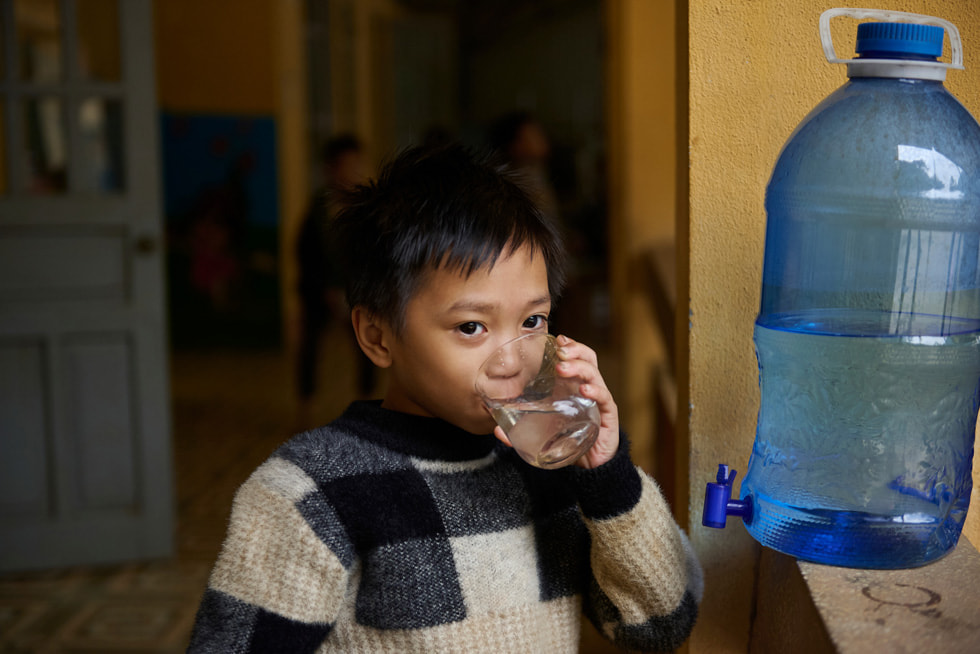
At the Vay Nua Primary and Secondary Boarding School for Ethnic Minorities in Hòa Bình, Vietnam, Gravity Water has ensured that every student now has access to clean water year-round through an automated, smart metering system that indicates whether to provide water from the springs, or collected rainwater.
In many instances, maintaining the quality of the water is out of the lakeside communities’ hands. Without proper filtration, groundwater retrieved from damaged wells is contaminated with calcium and other metals, while the streams running off the mountains are diverted or polluted in everyday agricultural practices — like irrigating rice fields and raising cattle — before they continue down the mountain. And in the dry seasons, the streams can slow to nothing more than a trickle.
At the school Hương’s son attends, global clean water organization Gravity Water has installed its innovative rainwater harvesting system to provide the teachers and students — many of whom live in the school’s dormitories from Monday to Saturday — a climate-resilient clean water source. In 2023, Apple awarded Gravity Water a grant to bring safe, clean water to 131 schools in northern Vietnam. This collaboration is connected with Apple’s water strategy to address water availability, water quality, and water accessibility in its supply chain around the world. Applying proven technologies to advance water access, sanitation, and hygiene (WASH) in areas such as Hòa Bình province reflects the breadth of the efforts.
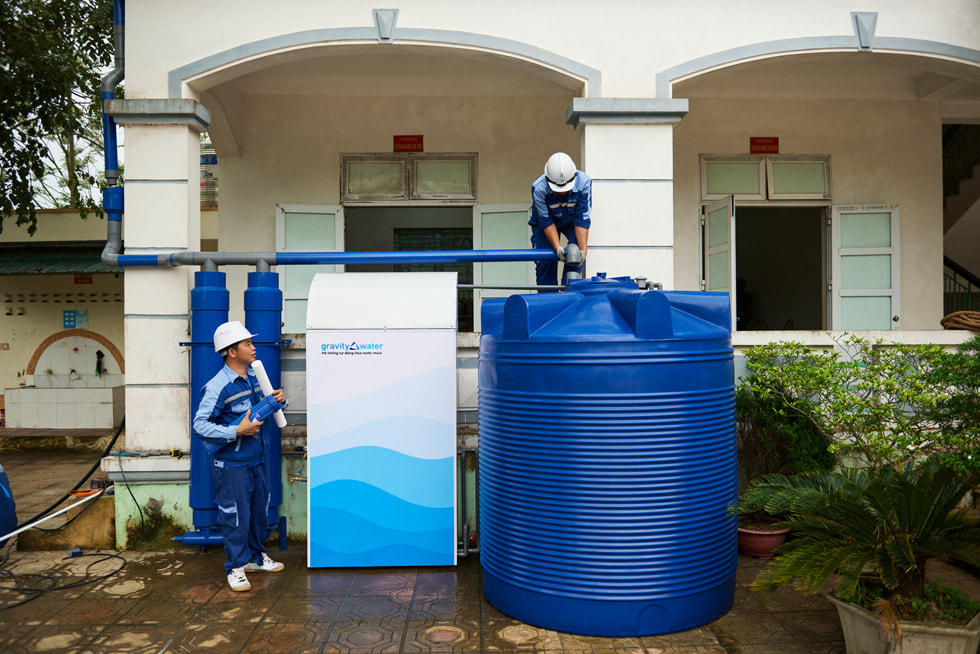
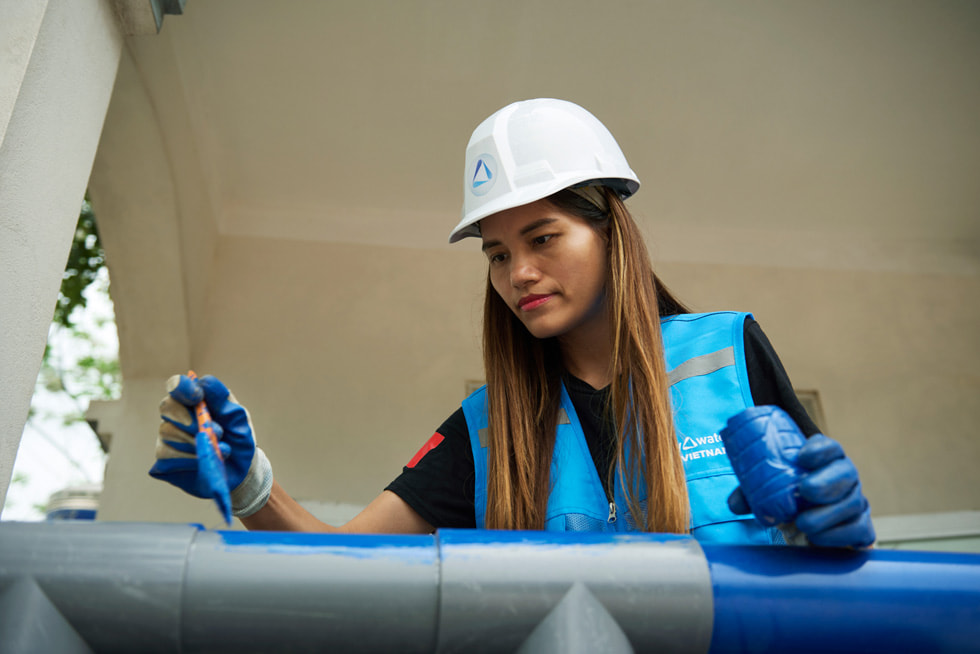
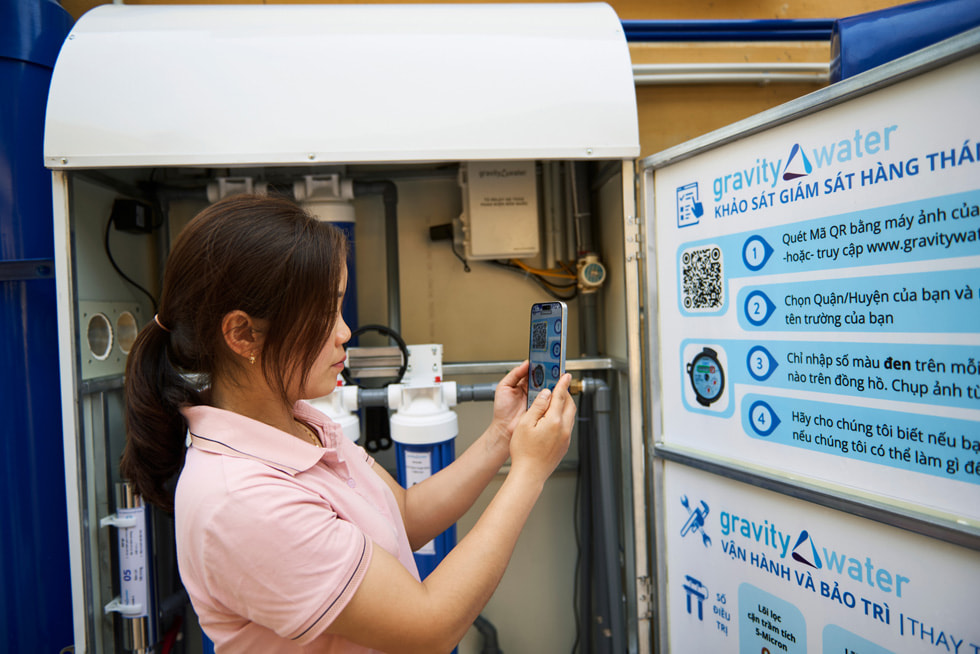
Using a human-centered design approach, Gravity Water partners with each school to determine their unique challenges and build the right solution for them. This approach allows the schools to have complete ownership by relying on the familiarity of their existing water storage system and the automation Gravity Water’s intervention provides.
“Weekly, we have five installations, and we get excited because we get to go to every school, and every school is different,” says Phan Viet Dung, Gravity Water’s project manager in Hòa Bình, who grew up in the province. “Transportation, the distance among the schools, and the conditions of the infrastructure are all so different. So at some schools, they lack tools, and in others, the water supply is unstable. We have to make sure that it doesn’t matter if the water source is stable or unstable — the school has clean water available all the time.”
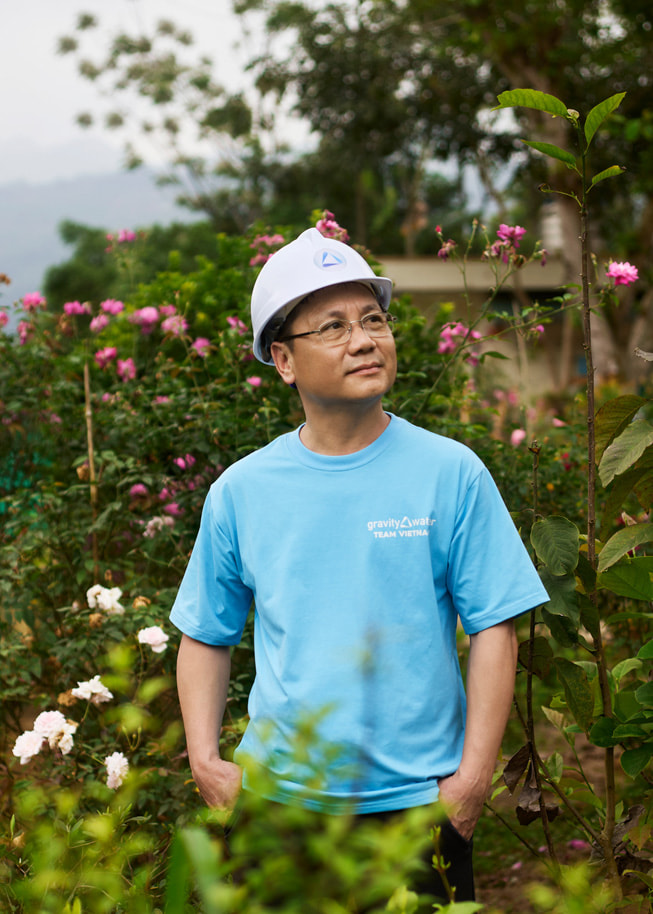
Phan Viet Dung is Gravity Water’s Hòa Bình province project manager. After growing up in the province and getting sick as a child from drinking untreated water from local canals, Dung decided to pursue a career in water resource management. Hear about his journey to Gravity Water and why he’s committed to providing clean water to the schools in his hometown.
Hòa Bình, which is classified as having a subtropic monsoon climate, experiences two distinct seasons. At the peak of the dry season, which typically lasts for one to two months between October and April, the province faces severe drought. The summer months bring heavy rains, some years totaling upward of 45 inches. As seen throughout the most densely populated parts of the world also situated in the subtropics, rainfall is both a necessity for nature and life to thrive, but also something to fear: Severe flooding and landslides are increasing in frequency in the most vulnerable communities, further polluting available water sources. But Gravity Water hopes to shift the perception of heavy rain as a climate threat, to one of its best solutions.
“Our philosophy is that rainwater has the ability to really shift the needle in water access for the people who need it most,” says Danny Wright, Gravity Water’s executive director, who founded the organization in 2016. “Rainwater harvesting is not new to Vietnam; it’s one of the world’s oldest technologies. I’ve gone to schools that have bamboo pieces cut in half collecting water off of roofs into different tanks. We have a huge opportunity to scale our technology and impact in these rural communities.”
By connecting a large weatherproof water tank to a series of smart meters to monitor levels of groundwater use and what’s collected from rainfall, Gravity Water is ensuring schools will have a reliable water source year-round. The system is fully automated, relying on the water level sensors to determine when to provide water — and from which source — to the school’s kitchens, bathrooms, and dormitories where the students shower and wash their clothes. The team is also training the school’s administration on how to monitor the school’s water consumption month to month. The teachers then take that monitoring a step further into their classrooms, modeling good water stewardship and hygiene practices in the students’ daily lessons and nonacademic activities.
“We have a lot of sessions to teach kids here how to use the water properly,” says Hà Thị Dự, Vay Nua’s vice principal. “Because they live here, they can learn that it takes time and effort to have clean water.”
“For us as students, each of us has to be responsible for our water supply,” says Bàn Thiên Anh, a seventh-grade student at Vay Nua. “This is the dry season, and we don’t have enough water from the source in the streams. At times, we don’t have enough water to clean the bathrooms, so we have to learn how to use water efficiently. For example, we only get water when we are thirsty, and we have to finish it. We should not waste it on the wrong purposes.”
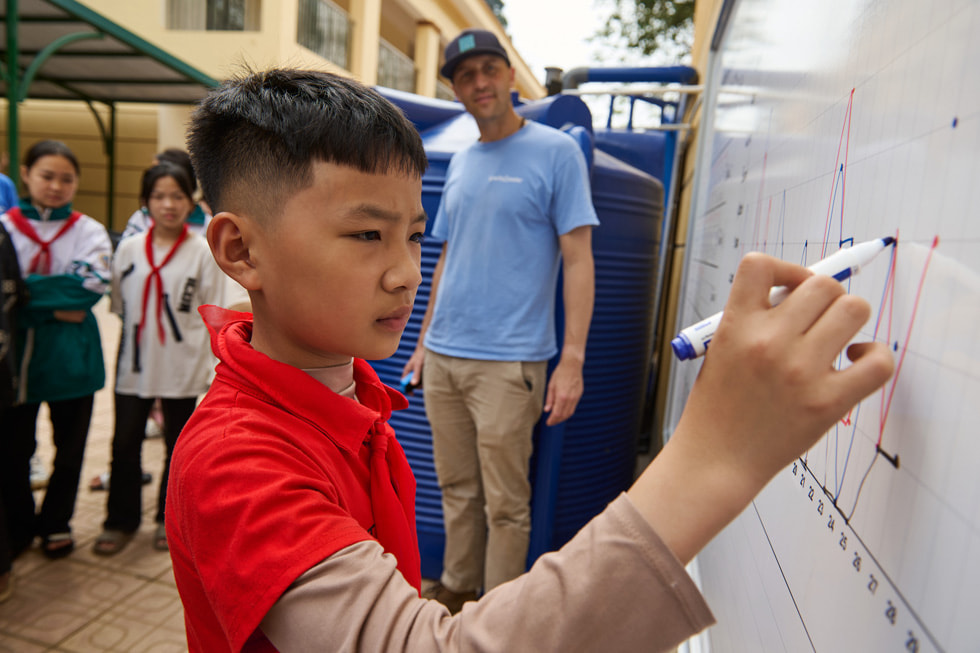
Bàn Thiên Anh is in the seventh grade at Vay Nua, where he says his favorite subject is math. Here, Anh draws a line graph showing the correlation between rainfall and water usage during a training demonstration on how the new Gravity Water system will help them monitor spring and stored rainwater usage.
At Hiền Lương Primary and Secondary School situated on the bank of Hòa Bình Lake, where another Gravity Water system has just been installed, Hà Hồng Liên leads a morning exercise routine during one of the students’ 15-minute breaks from lessons. As the school’s nurse, Liên is responsible for the children’s health and wellness.
“The children are happy all the time, and they have a lot of energy,” says Liên. “Every year, I have programs to teach children how to take care of themselves and how to maintain good hygiene. But there are a lot of students at break time, and they play and they are thirsty. Before Gravity Water, I was very concerned about my own health and the children here, regarding the quality of the water.”
“Even teachers have to use water carefully,” Liên continues. “If we use water to wash the vegetables, we will use that water to wash the dishes or do something else afterward. So we make sure that we can reuse water.”
“We are adults, so we are aware of the relationship between our safety, our health, and the environment,” says Phạm Thiên Nam, Hiền Lương’s principal. “We have a saying in Vietnamese that we eat cooked food and boiled water. We want the kids to learn the same thing, so that they not only have the knowledge but also can maintain their own safety.”
Whether at school or at home, access to drinking water can be costly in the communities across Hòa Bình, 70 percent of which are populated by ethnic minorities earning less than $4 USD per day who cannot afford bottled water or household filtration systems. Rainwater harvesting during the heavy monsoon season is one nature-based, cost-effective way to bridge the gap.
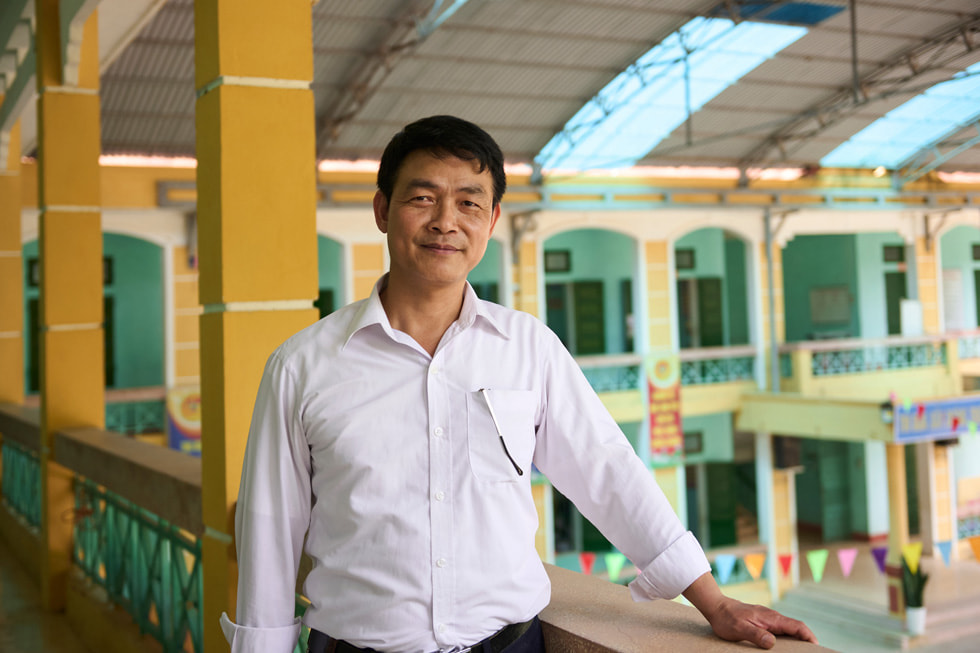
Phạm Thiên Nam is the principal at Hiền Lương Primary and Secondary School, where he teaches students practical lessons to show the relationship between their safety, their health, and the environment. He is excited to train the school’s faculty to use Gravity Water’s new system and implement water safety lessons in their classrooms.
“We transform the disadvantage to an advantage, so we have more water to fill in Gravity Water’s tanks and the school’s tanks,” says Chu Thanh Hoa, Gravity Water’s national director in Vietnam.
Beyond Hòa Bình, Gravity Water has projects around the world to further scale its rainwater harvesting technology as a climate-resilient solution for schools and the most vulnerable communities. In Nepal, its systems are providing over 60 communities in the Kathmandu Valley with access to clean water. In Taipei, Taiwan, the organization is helping 48 schools and the city run its operations off rainwater. In Malaysia, Gravity Water’s technology is providing another 50 schools access to safe drinking water. And in Mexico, it is partnering with Isla Urbana, a local rainwater harvesting company that builds urban, rural, and school rain systems. With each of these projects, Gravity Water is collecting real-time data to measure impact and monitor the effectiveness of its system.
By 2030, Gravity Water plans to bring safe, clean water to 1 million structures through a variety of projects and partnerships at schools, with public infrastructure, and even in households. As severe weather events continue, and more populations are impacted in both developed and developing countries, the organization is optimistic about a future that keeps communities connected to their environment.
“Climate resilience is strengthening people’s relationship and understanding of their natural resources,” says Wright. “For the next generation of students and the people inheriting this planet, understanding the importance of saving water is so critical. We’re really excited to bring this education program to children to help them actually see their water use, see the rainwater harvesting, and get excited about it. And maybe that’s going to change behavior because while they’re washing their hands, they might say, ‘Hey, if I turn this faucet off, maybe that line tomorrow is going to be lower.’ And that’s what we’re really hoping to do: inspire critical thinking on how we can create solutions to help have a better relationship with our environment.”
Jaa artikkeli
Media
-
Tämän artikkelin teksti
-
Images in this article
